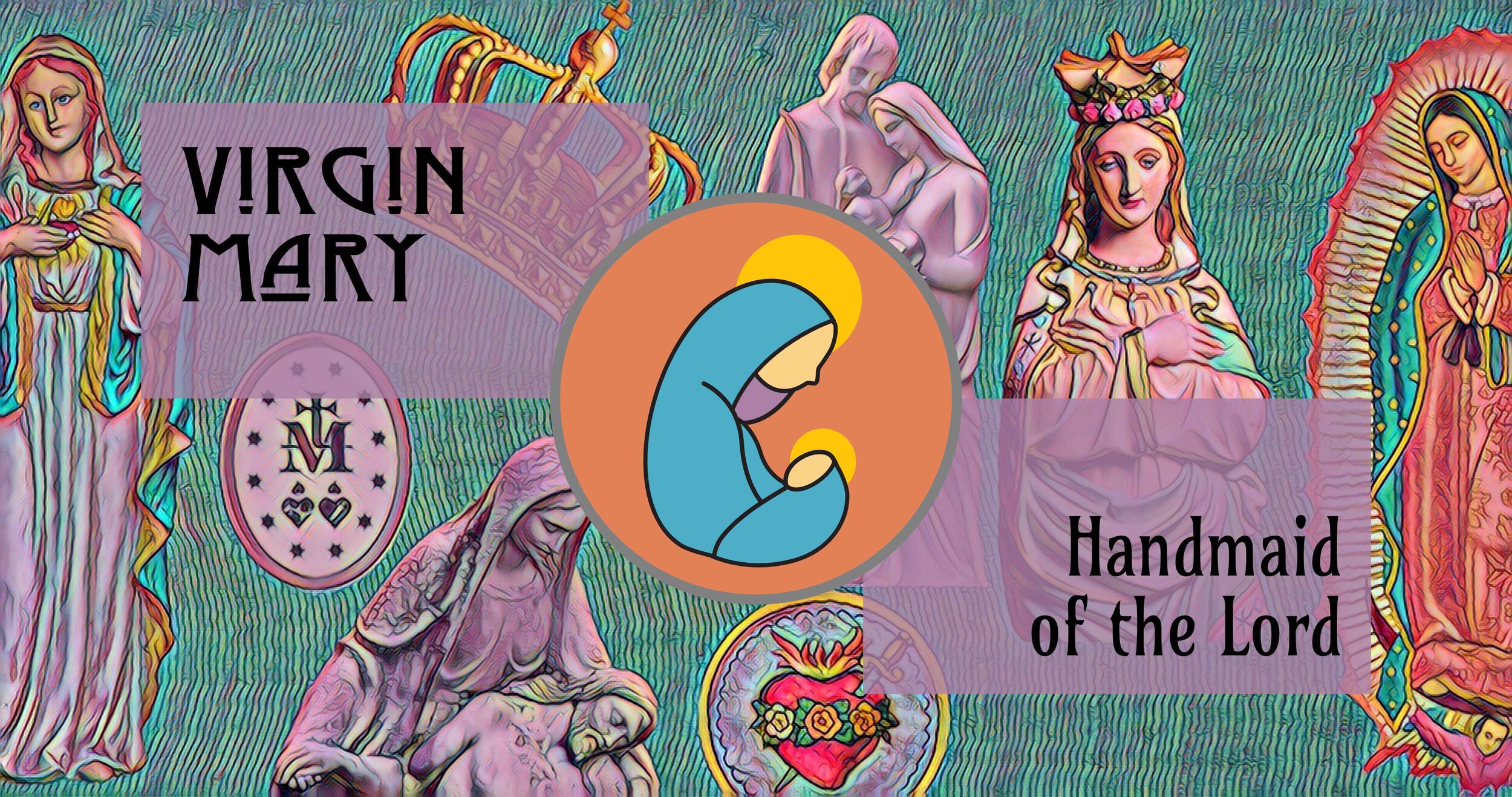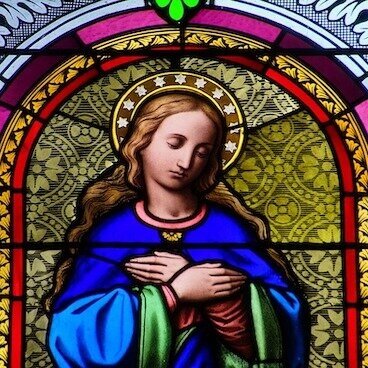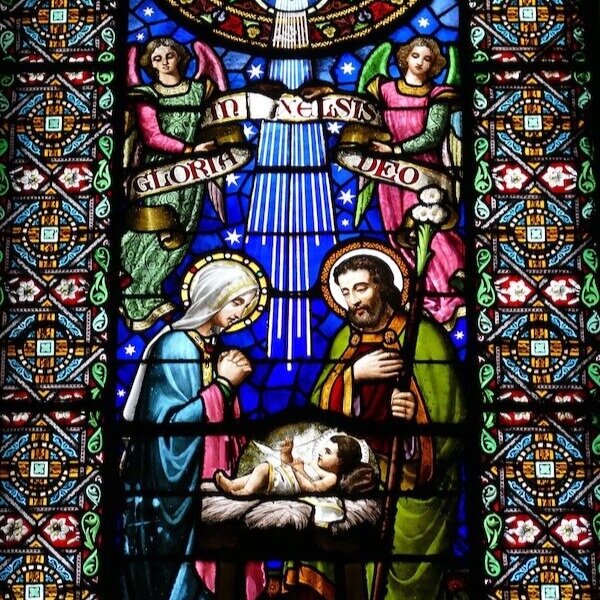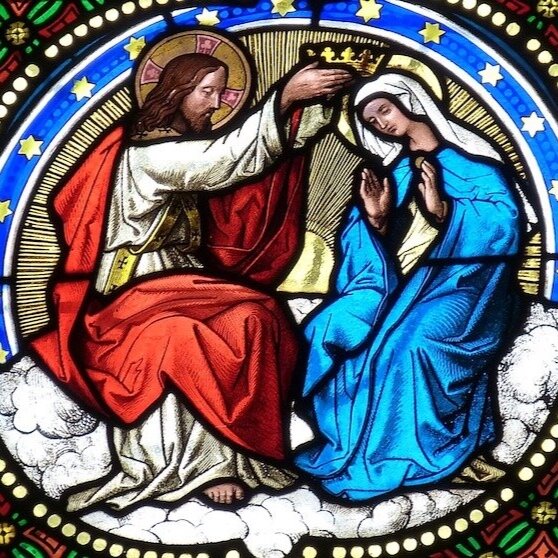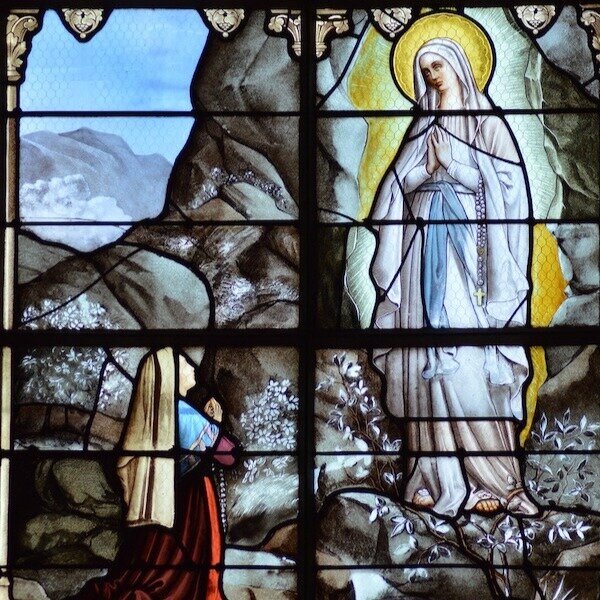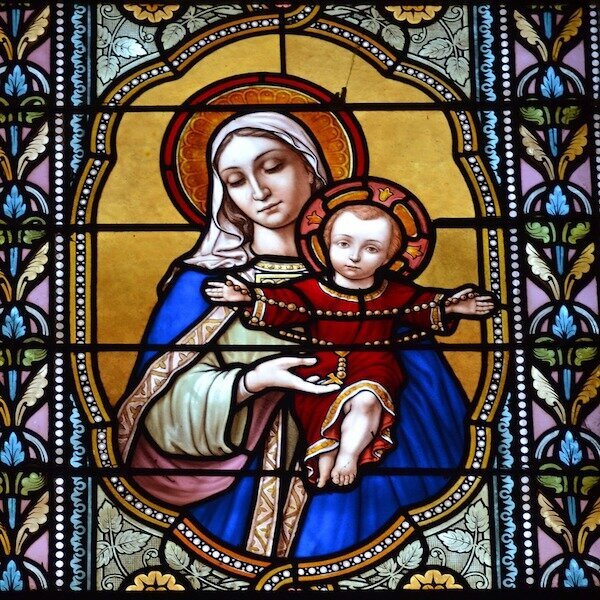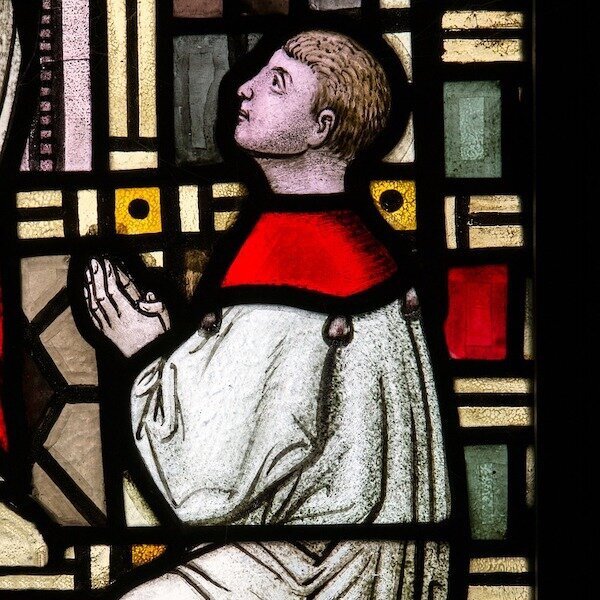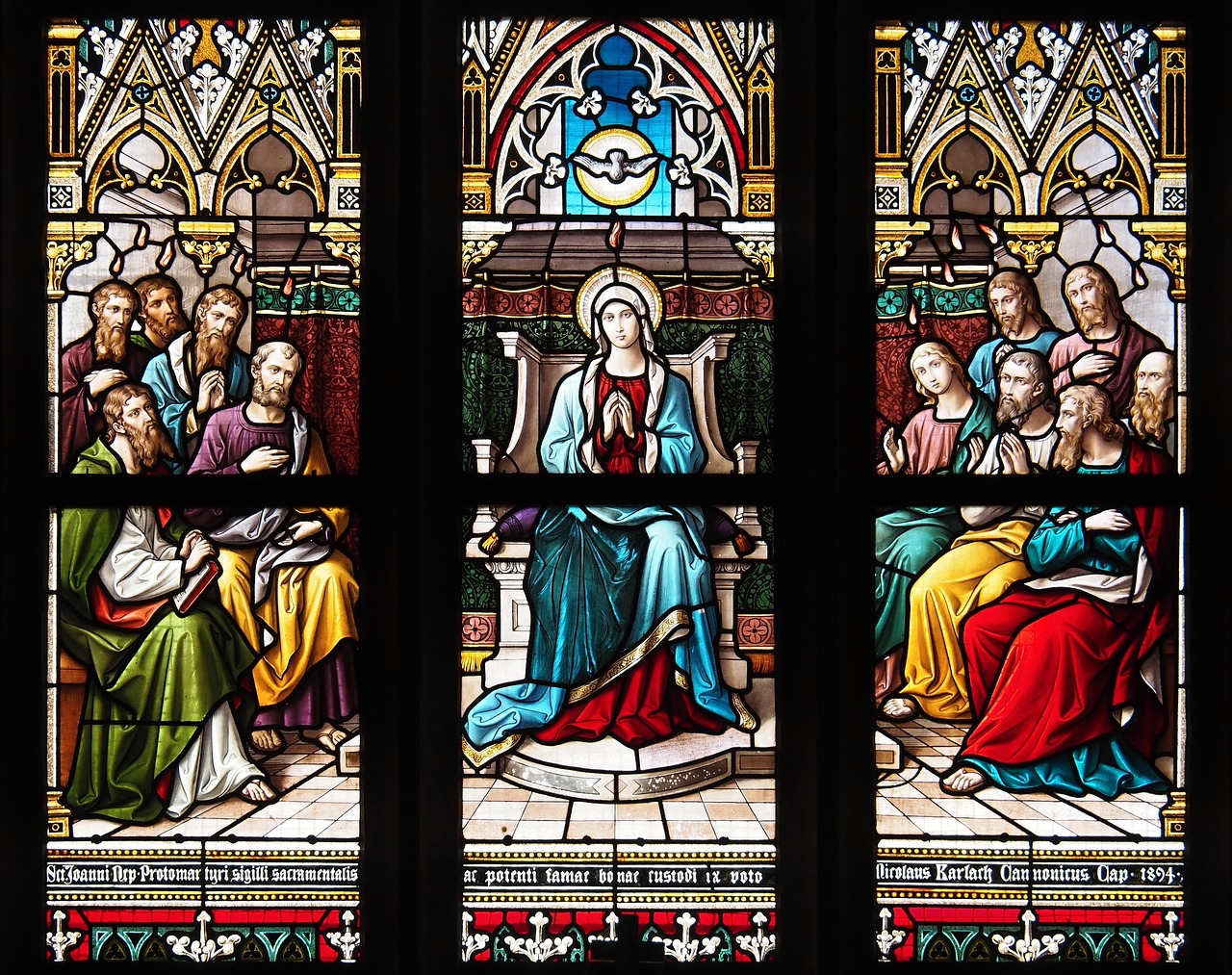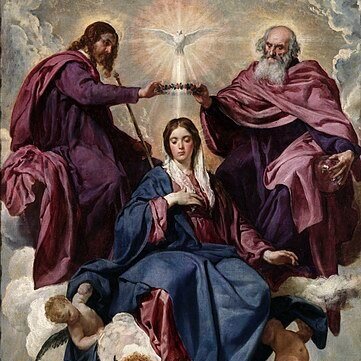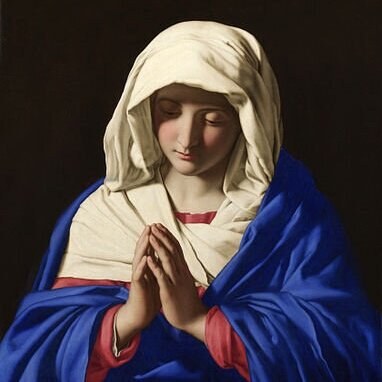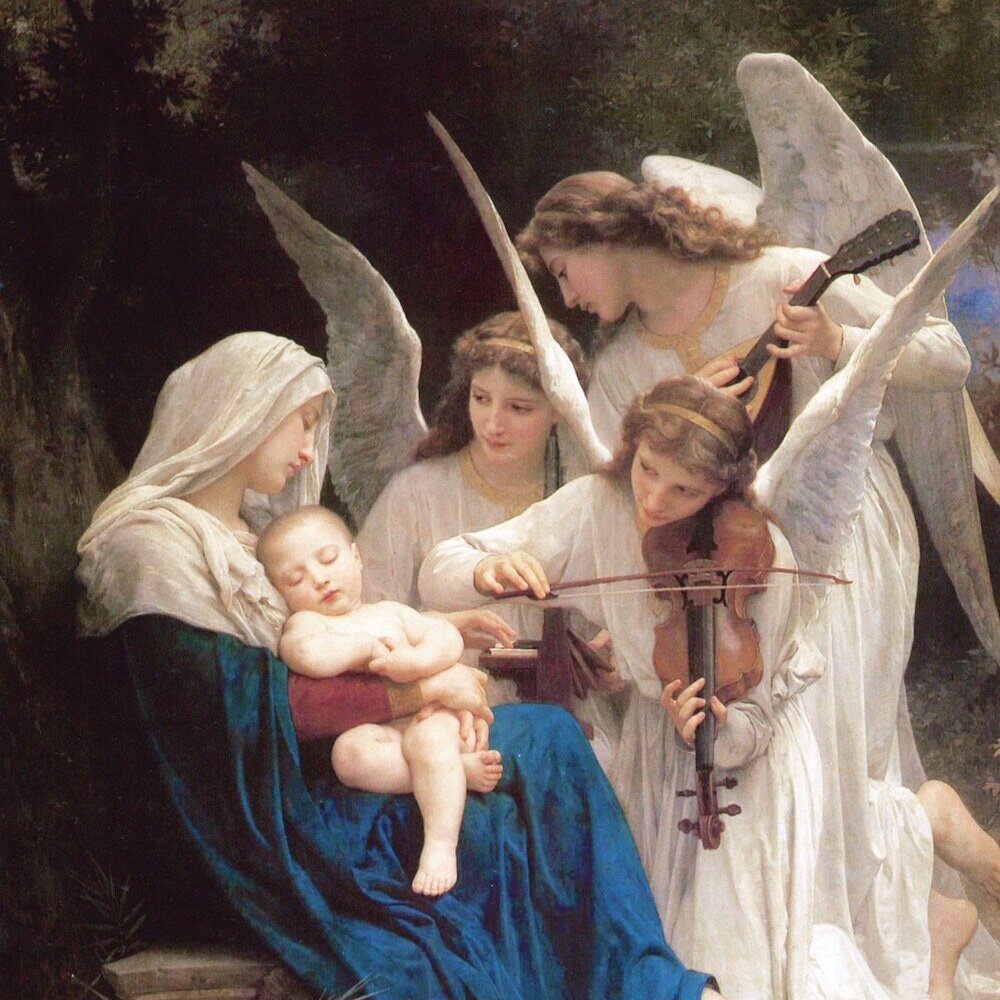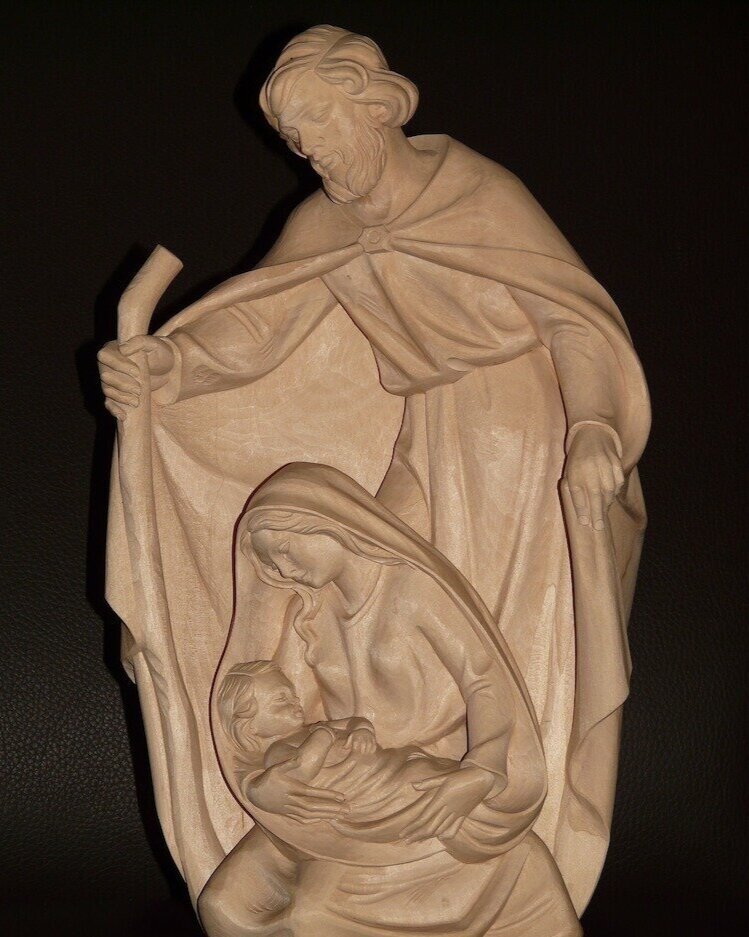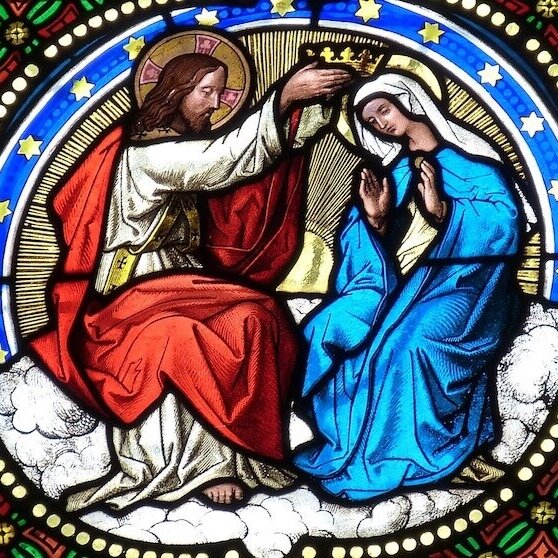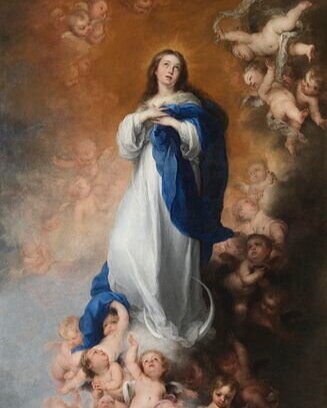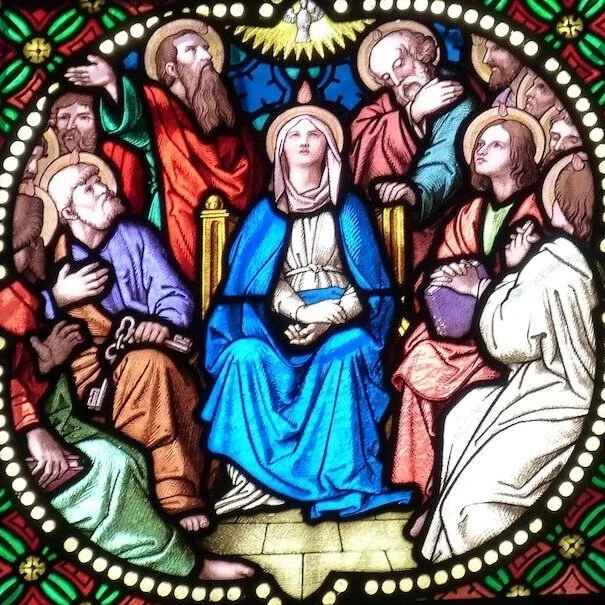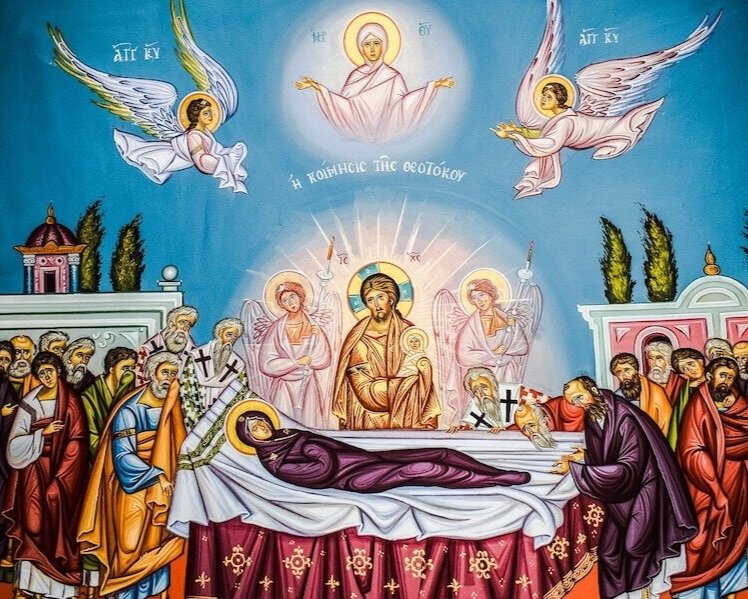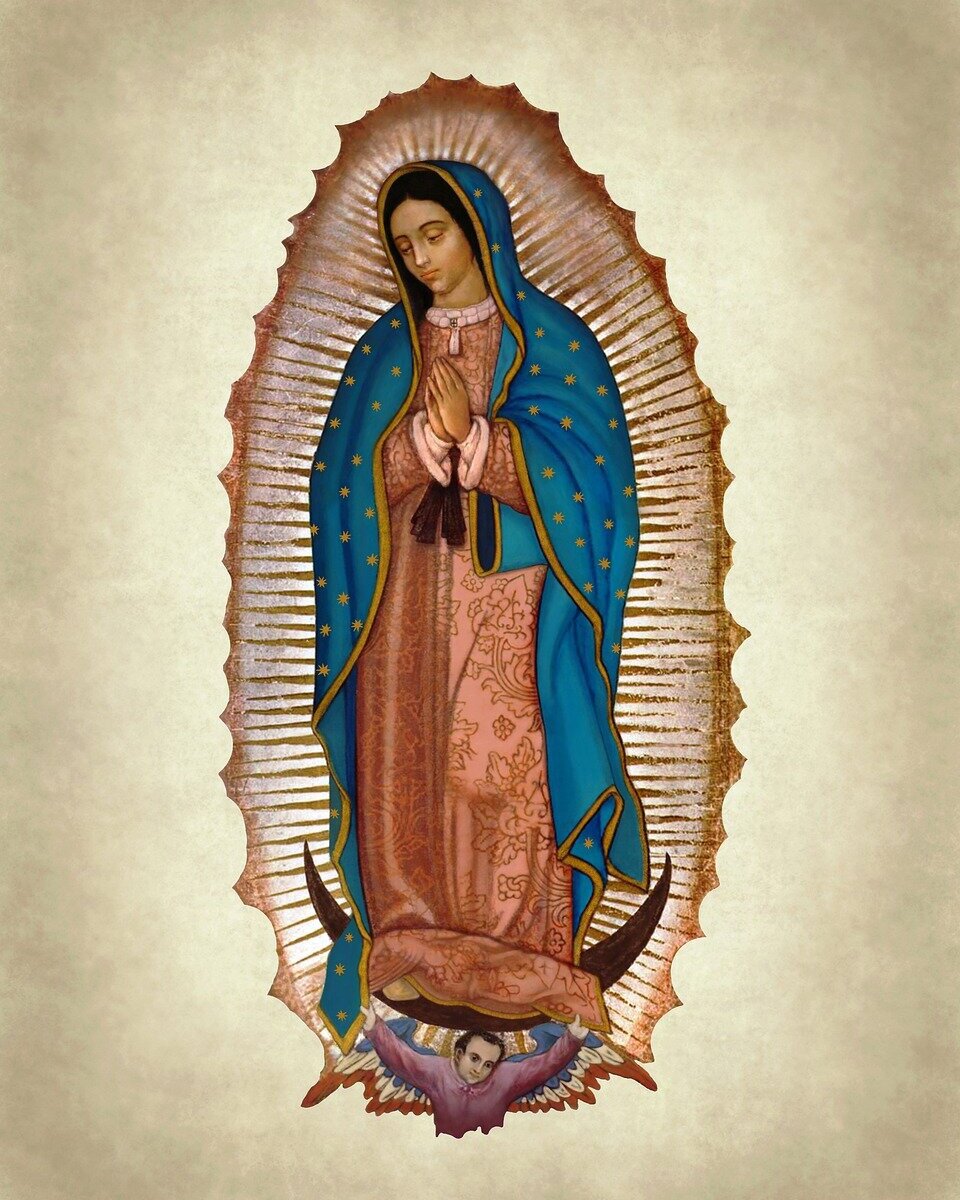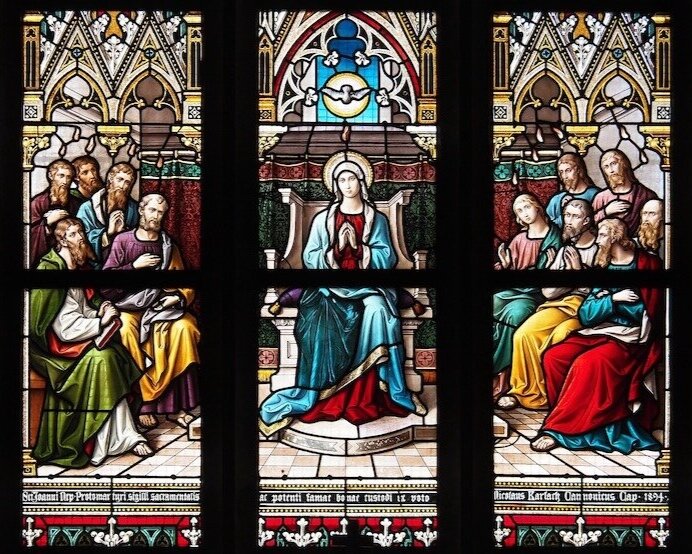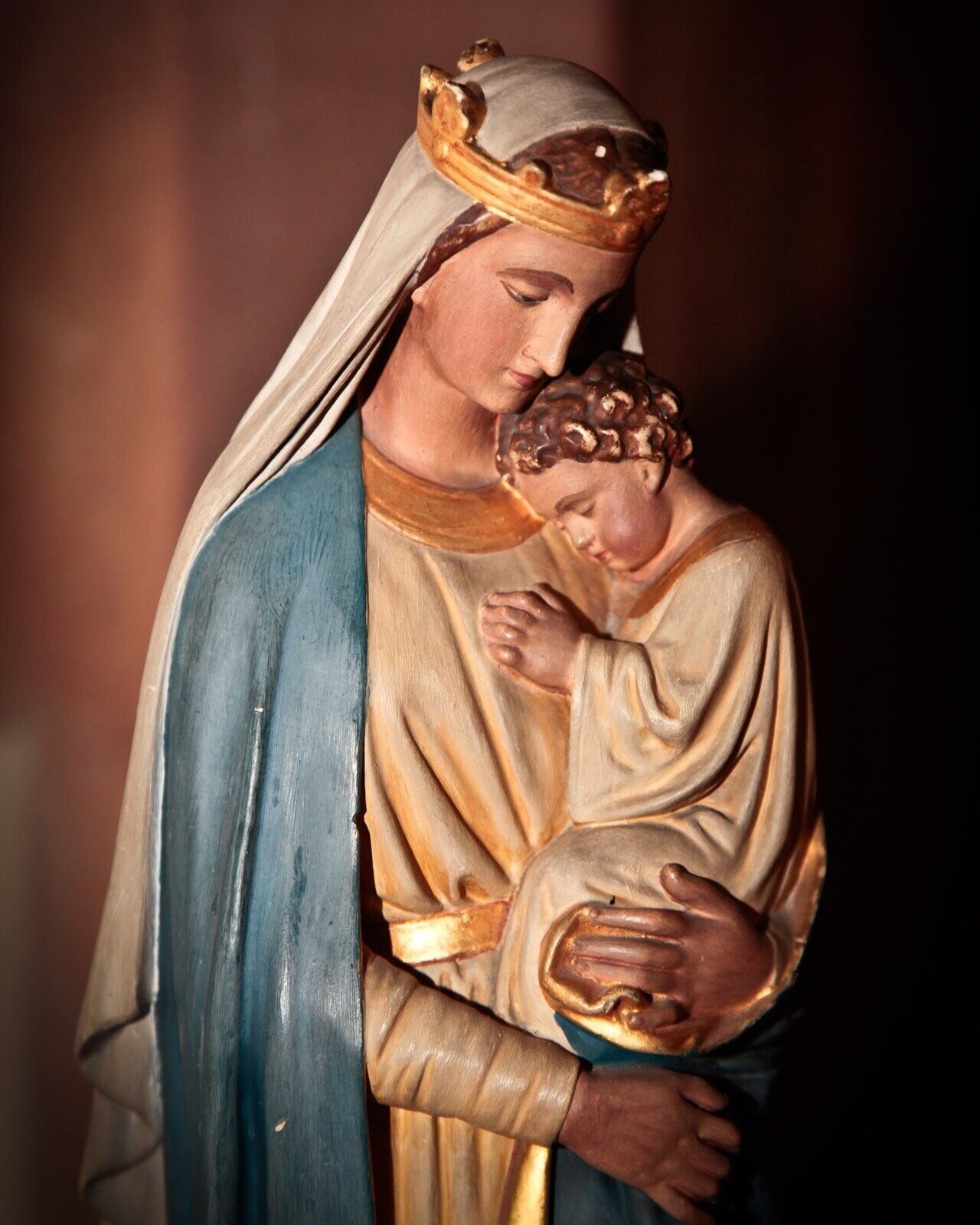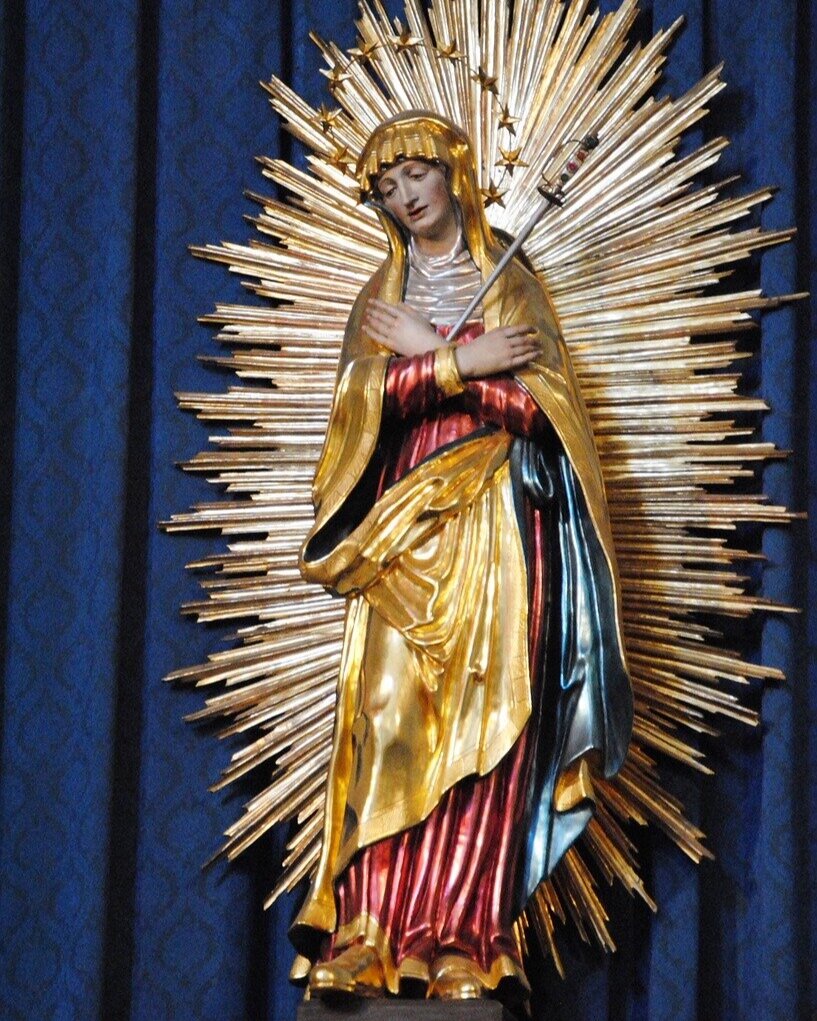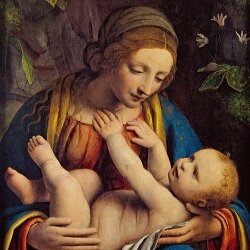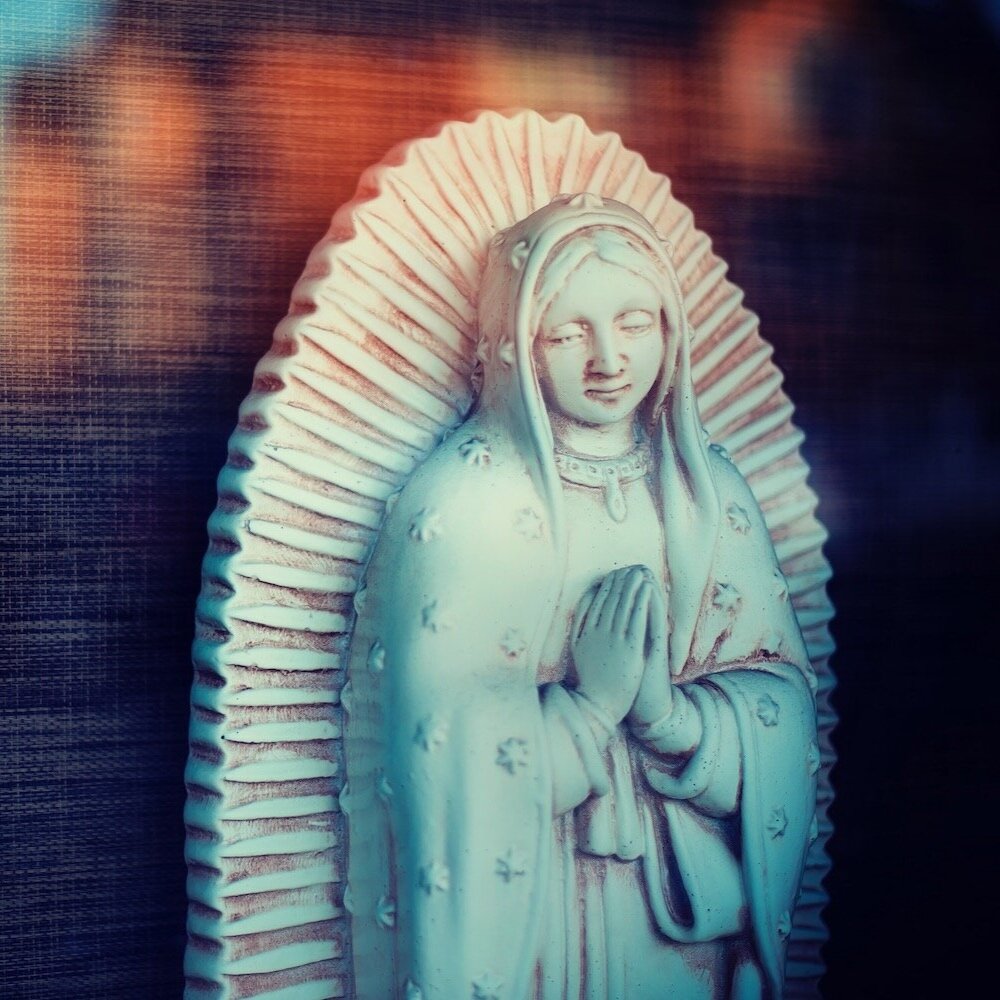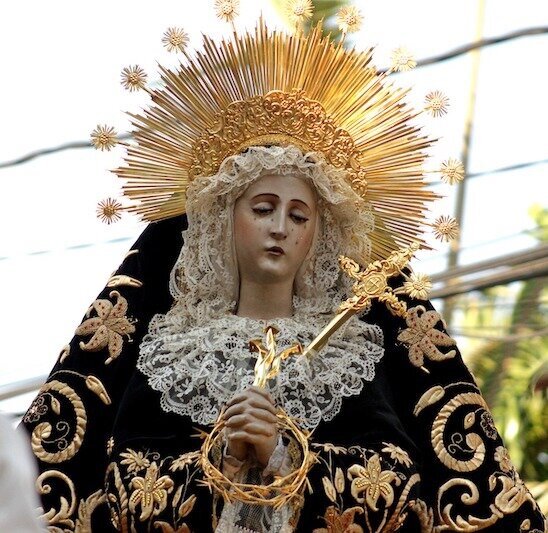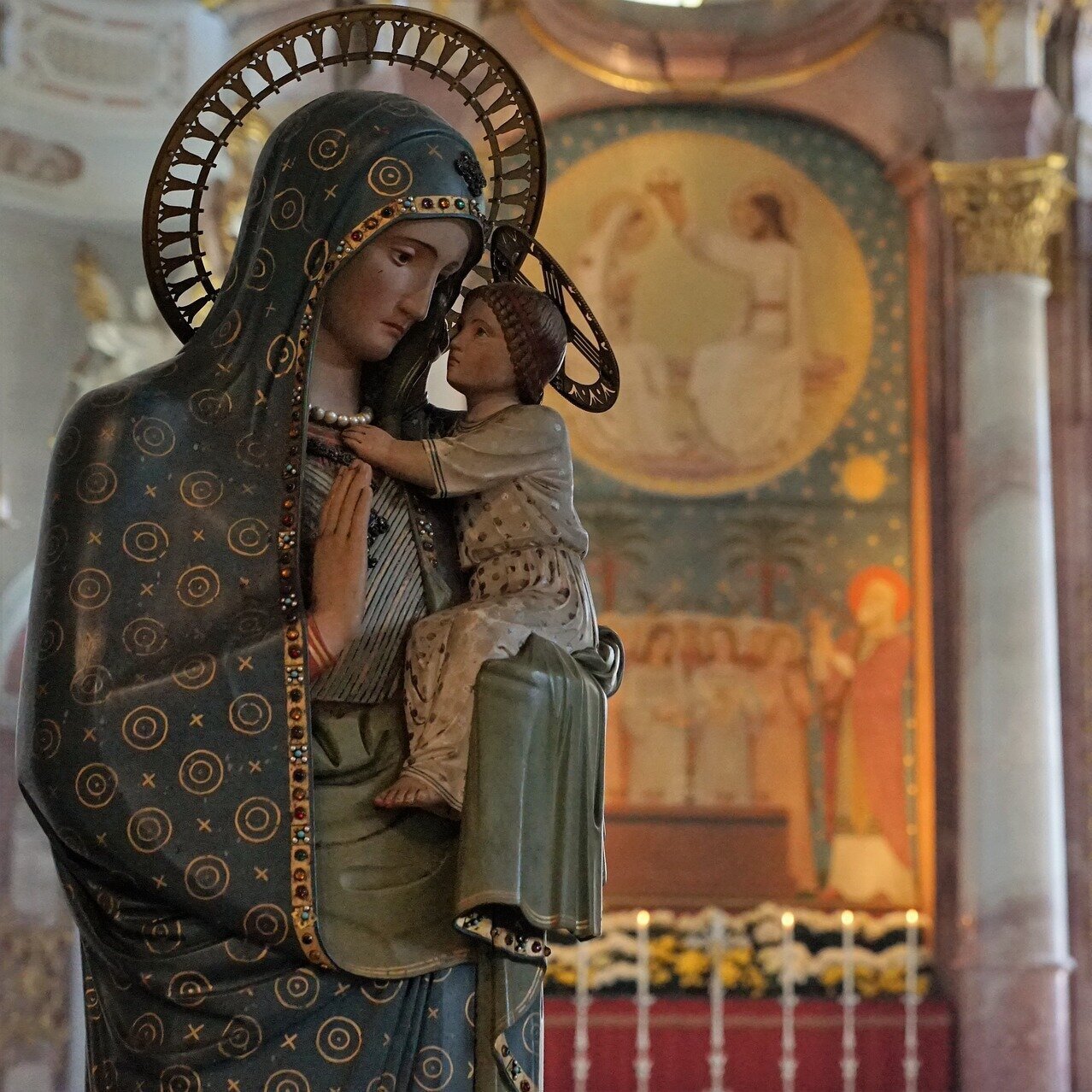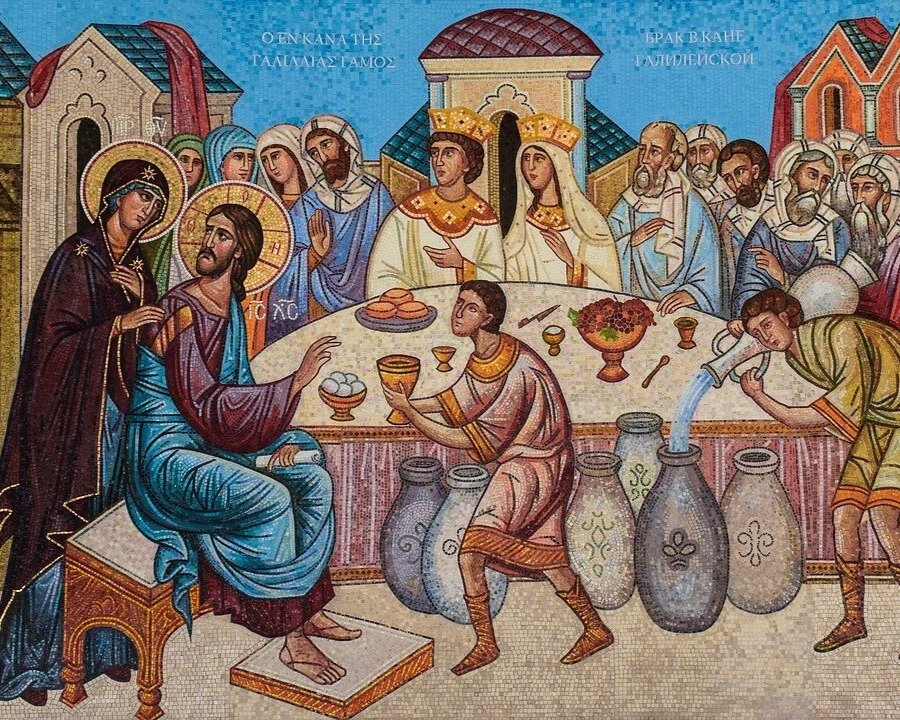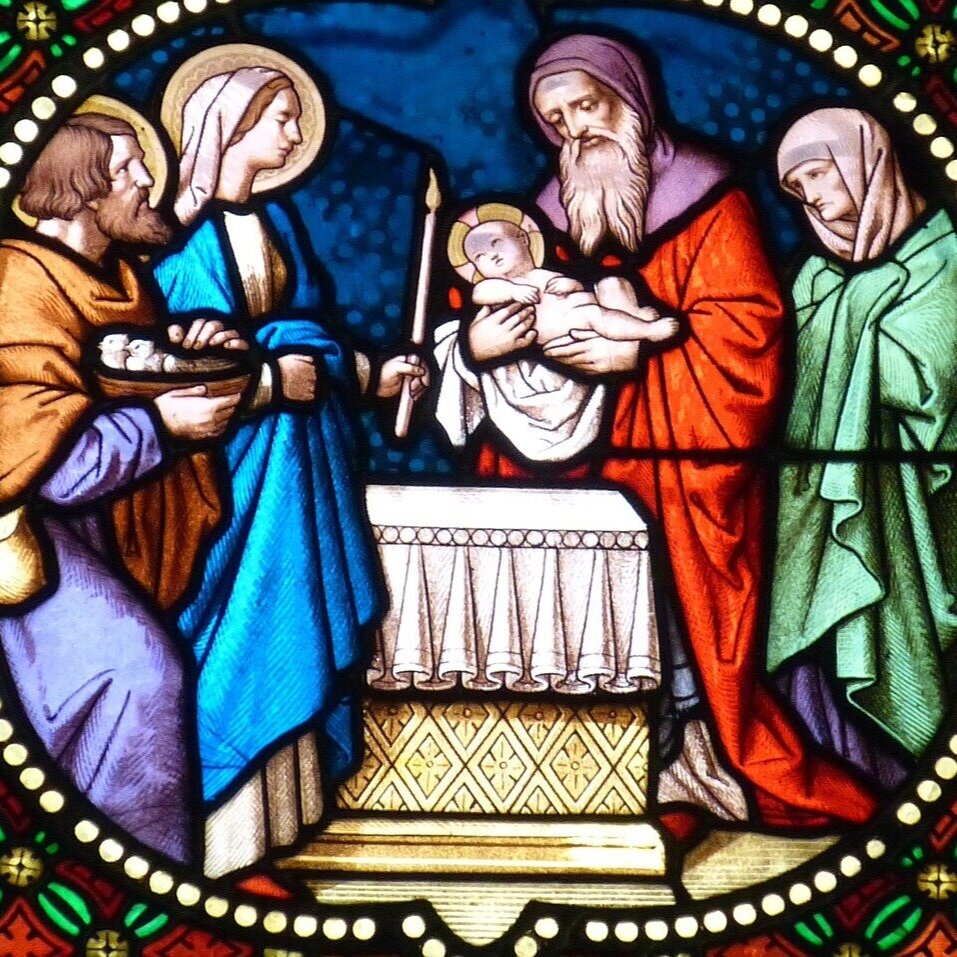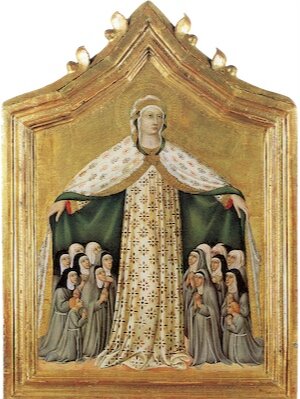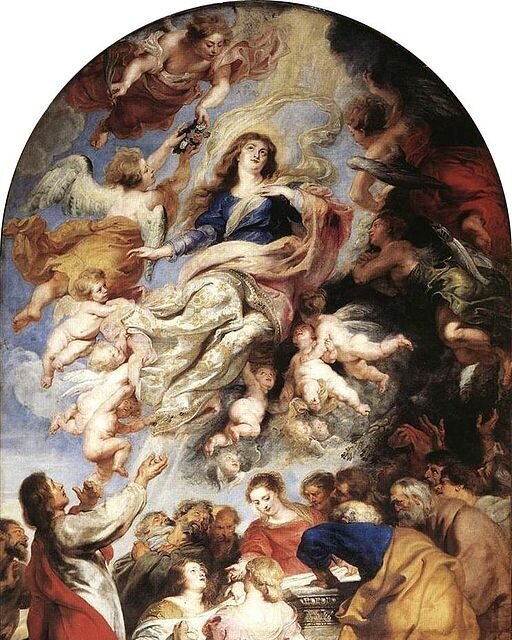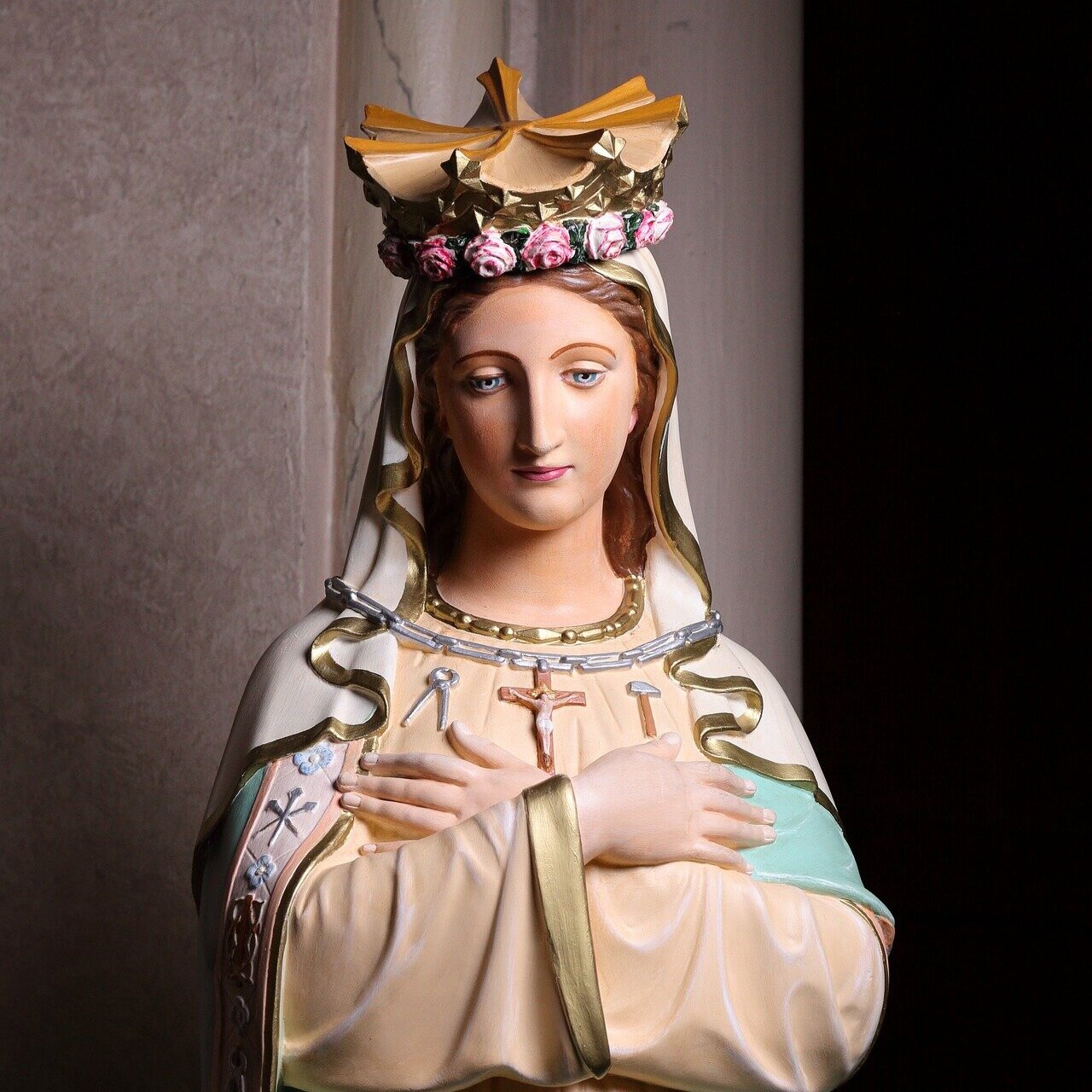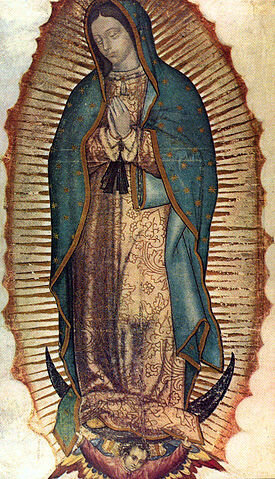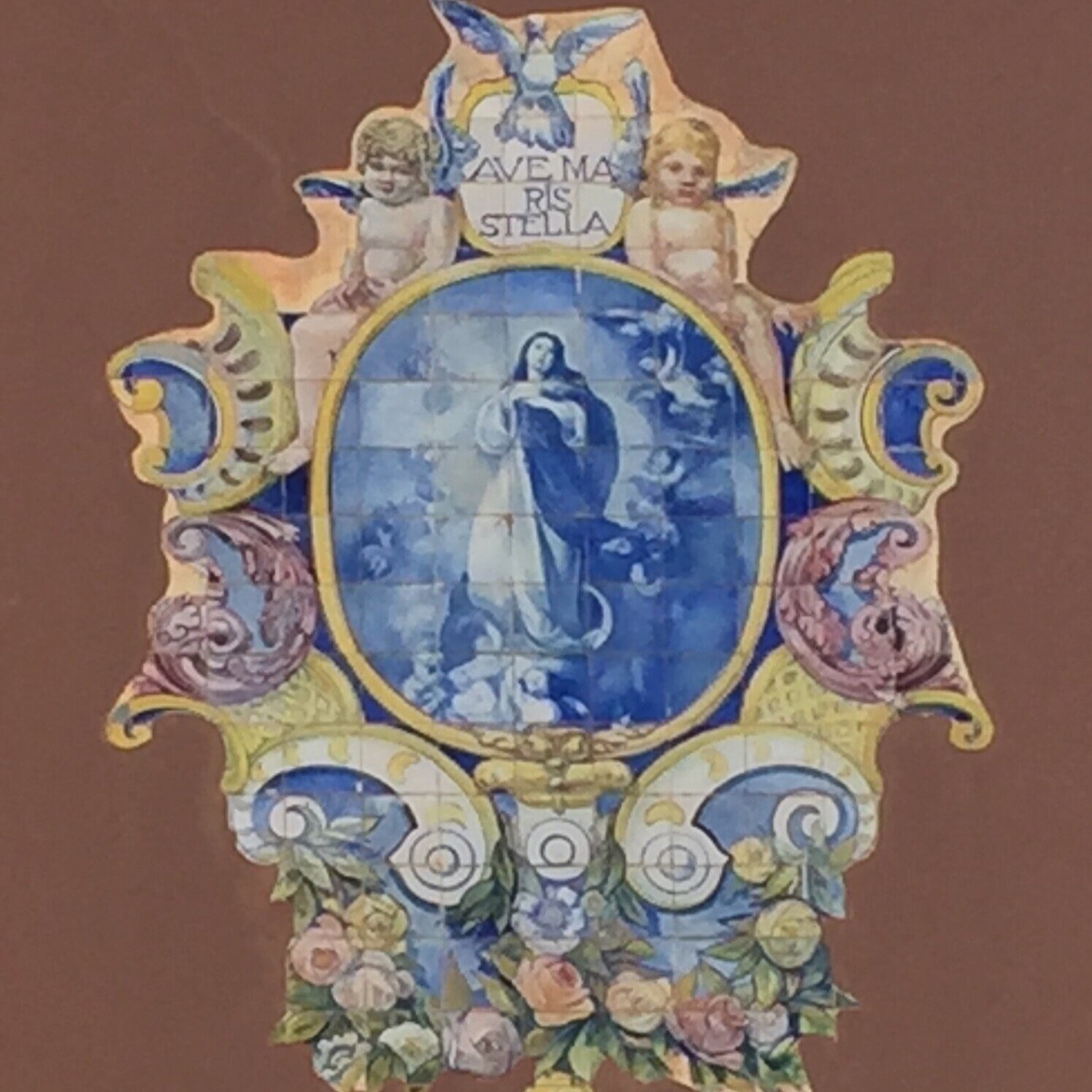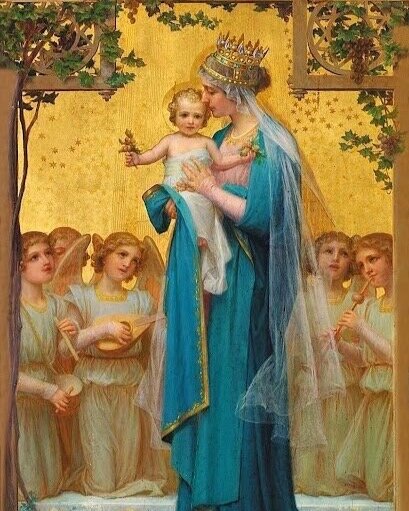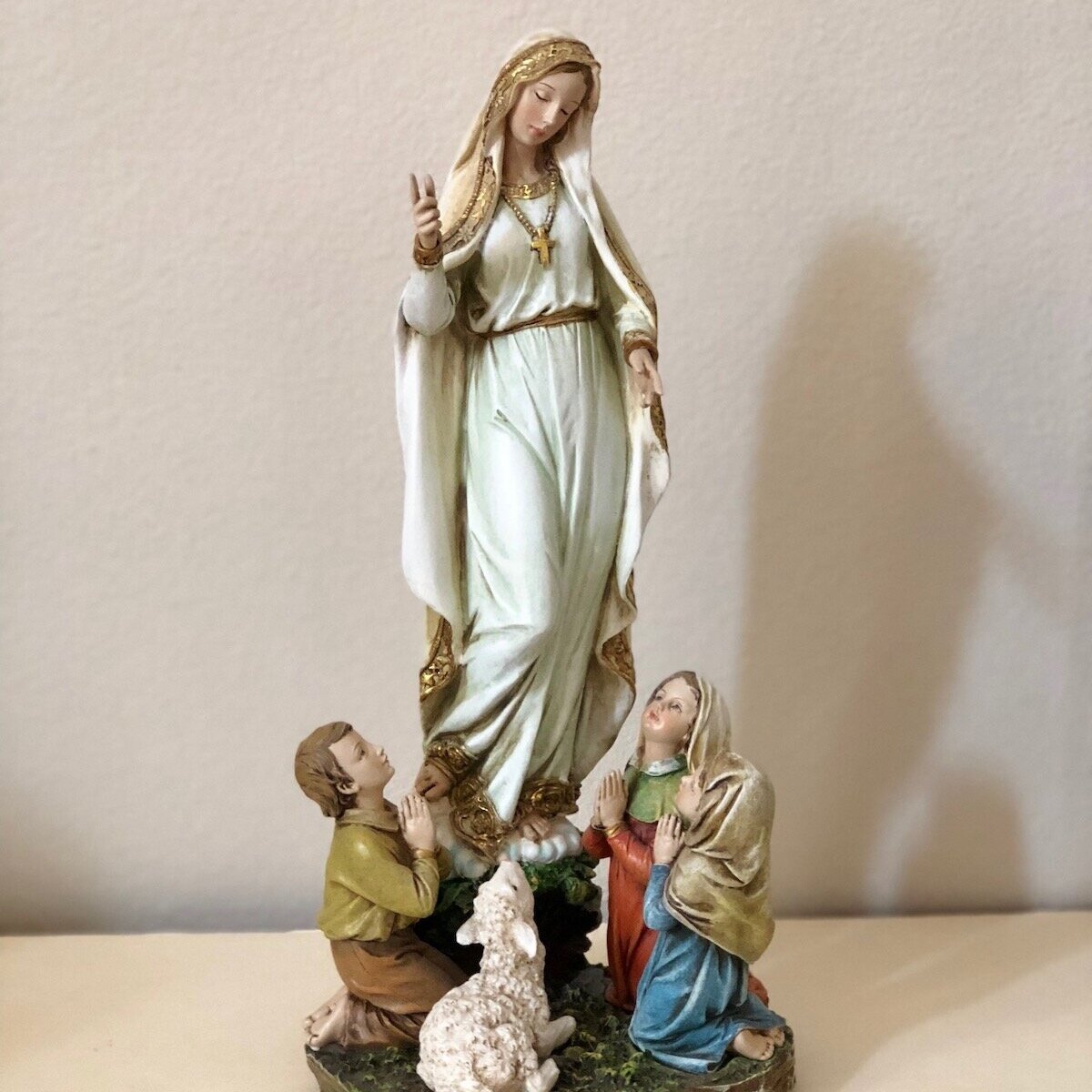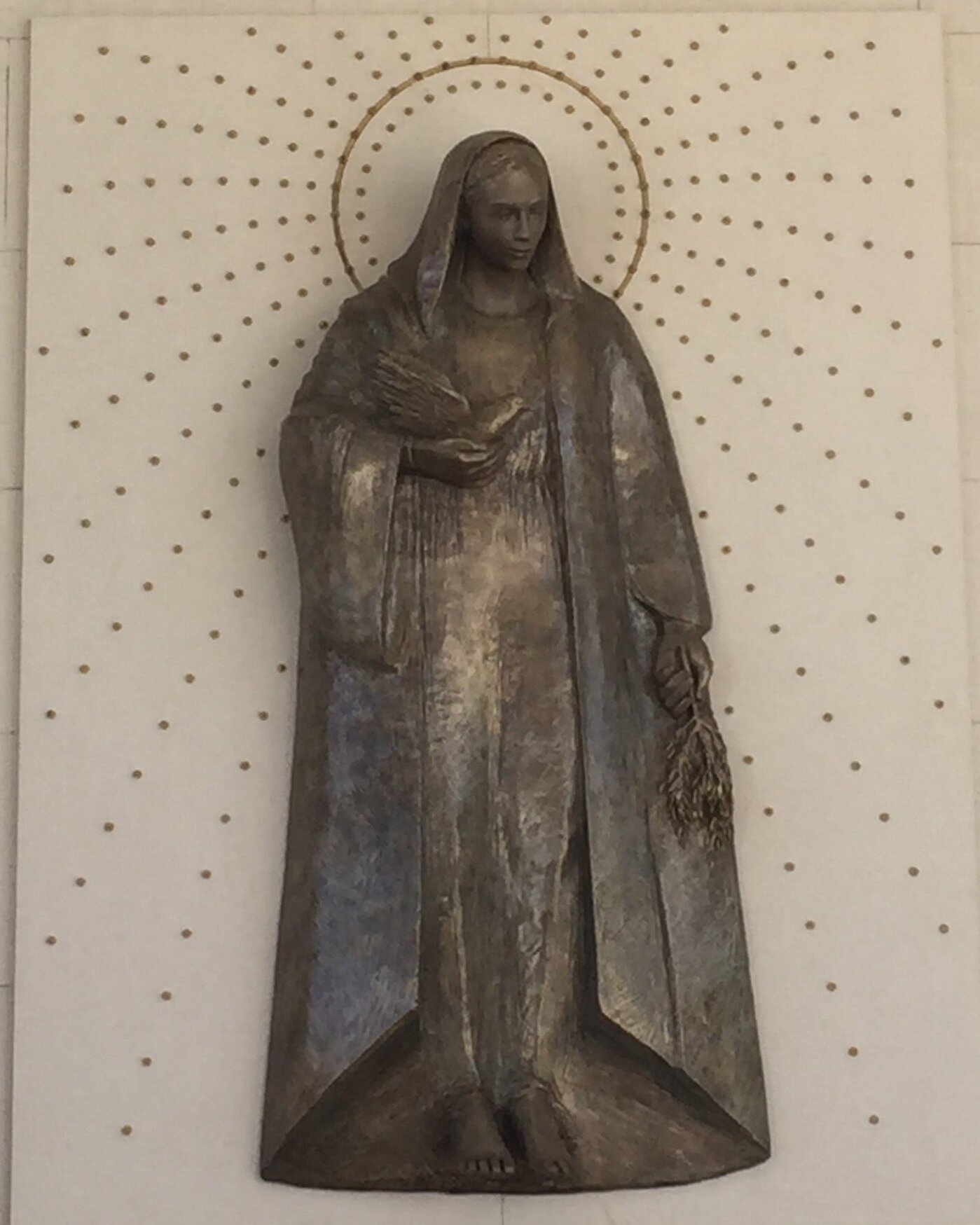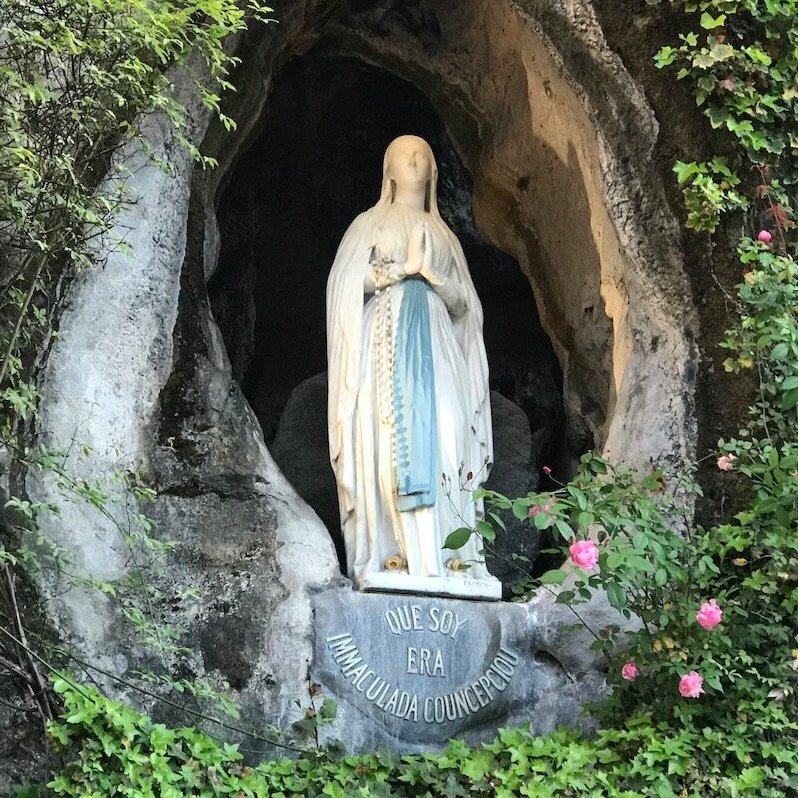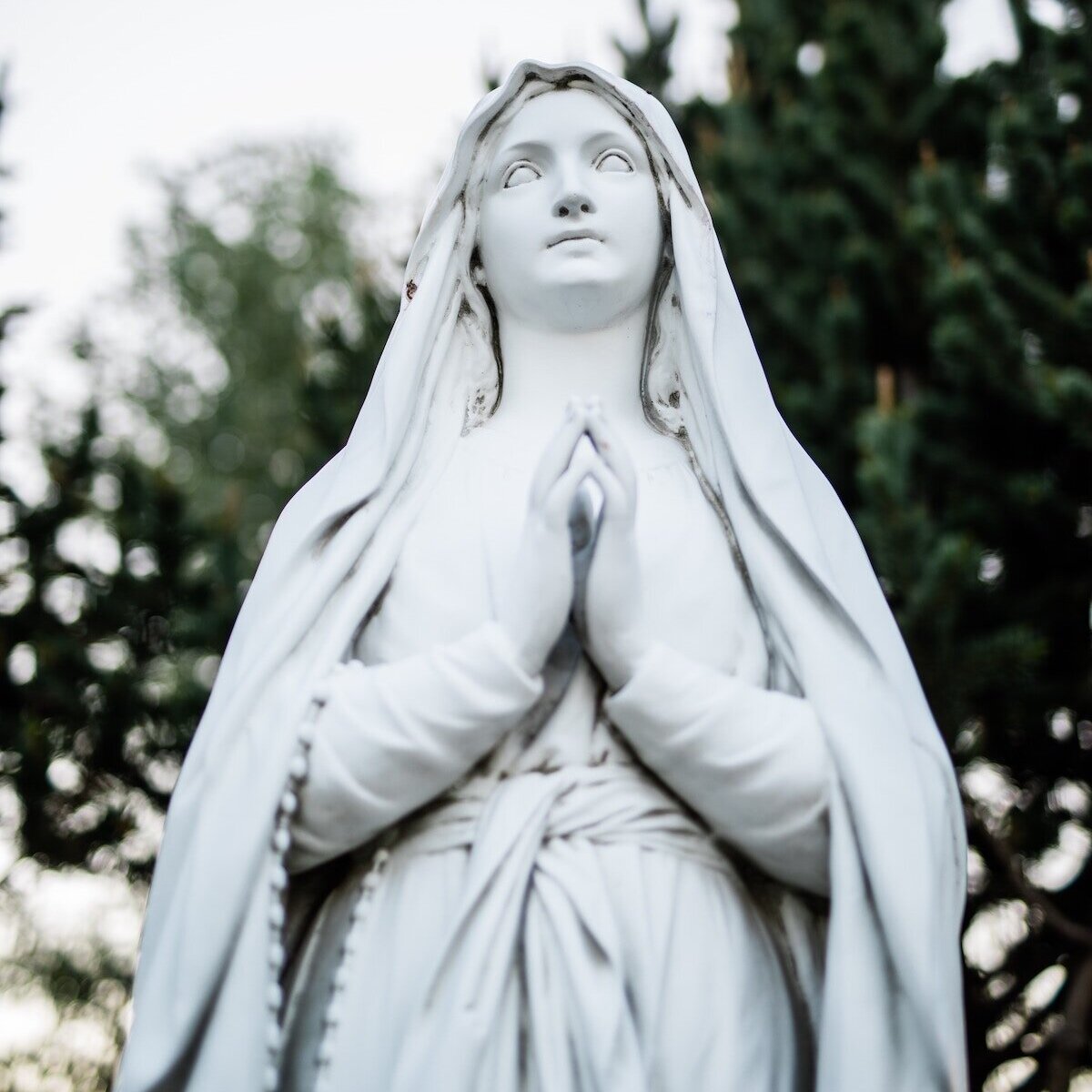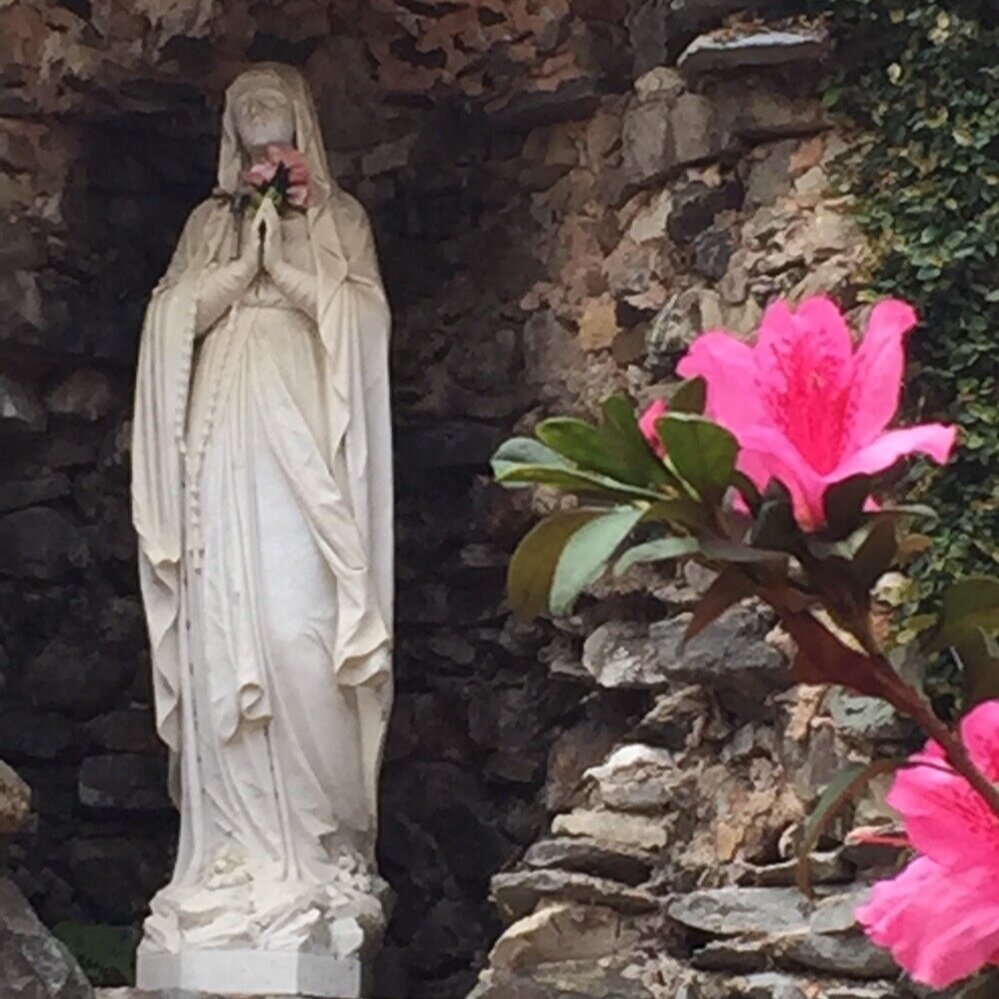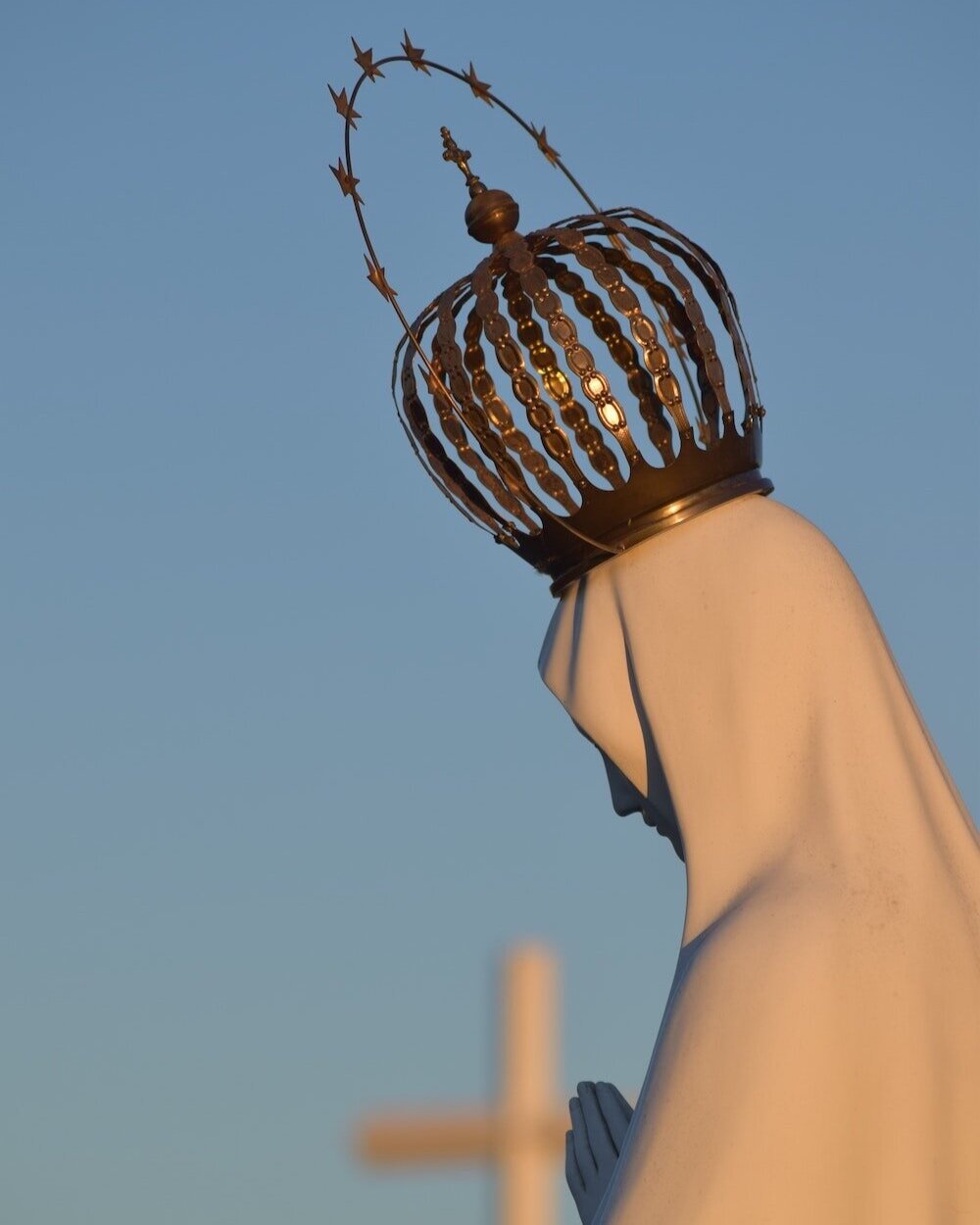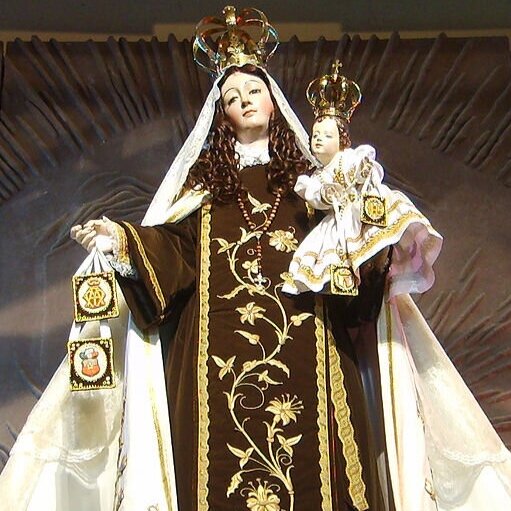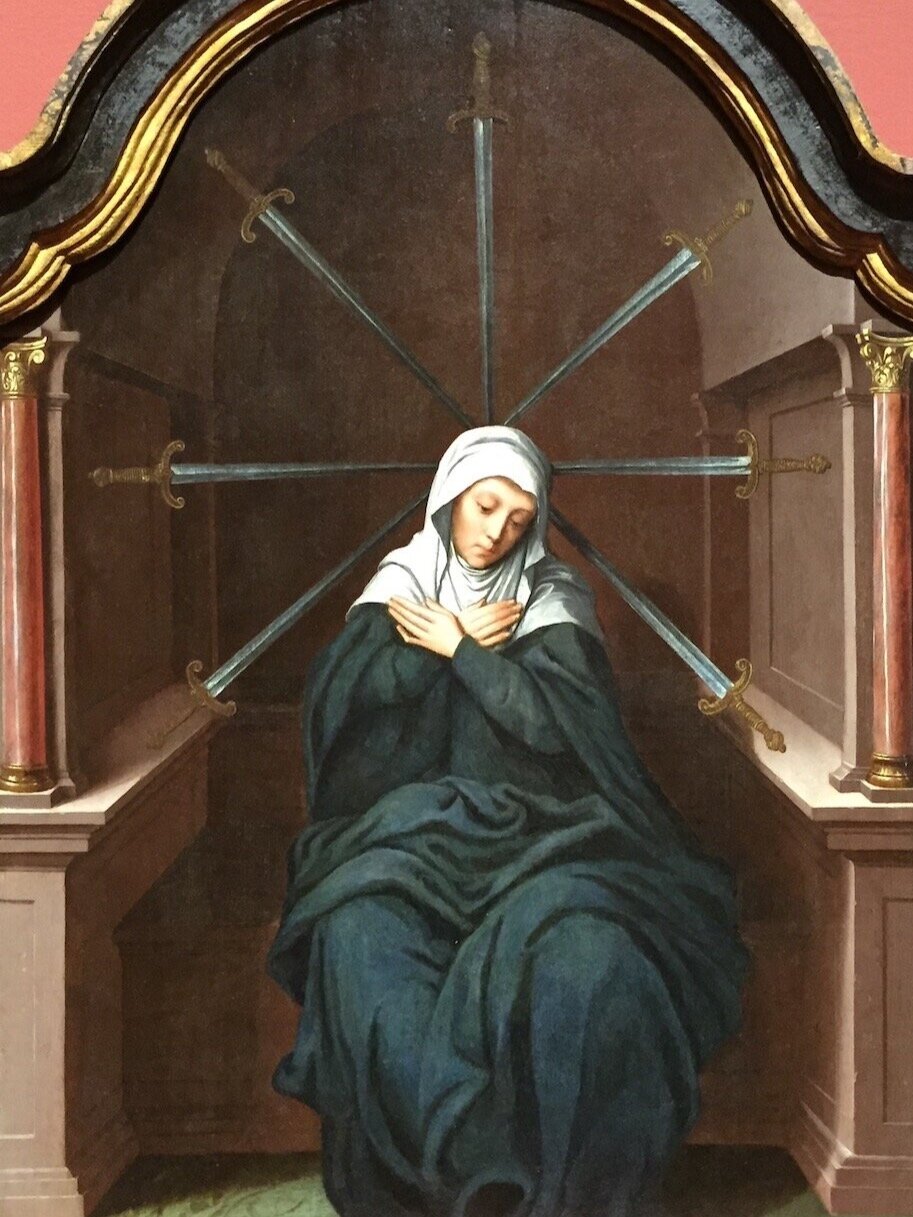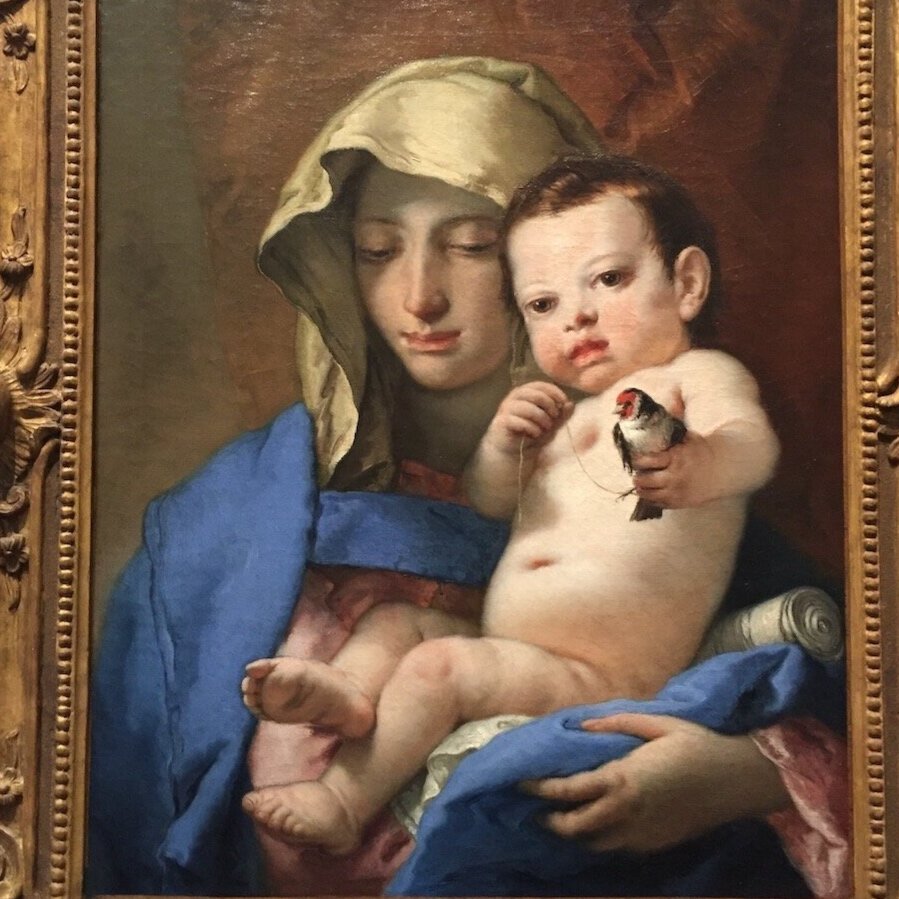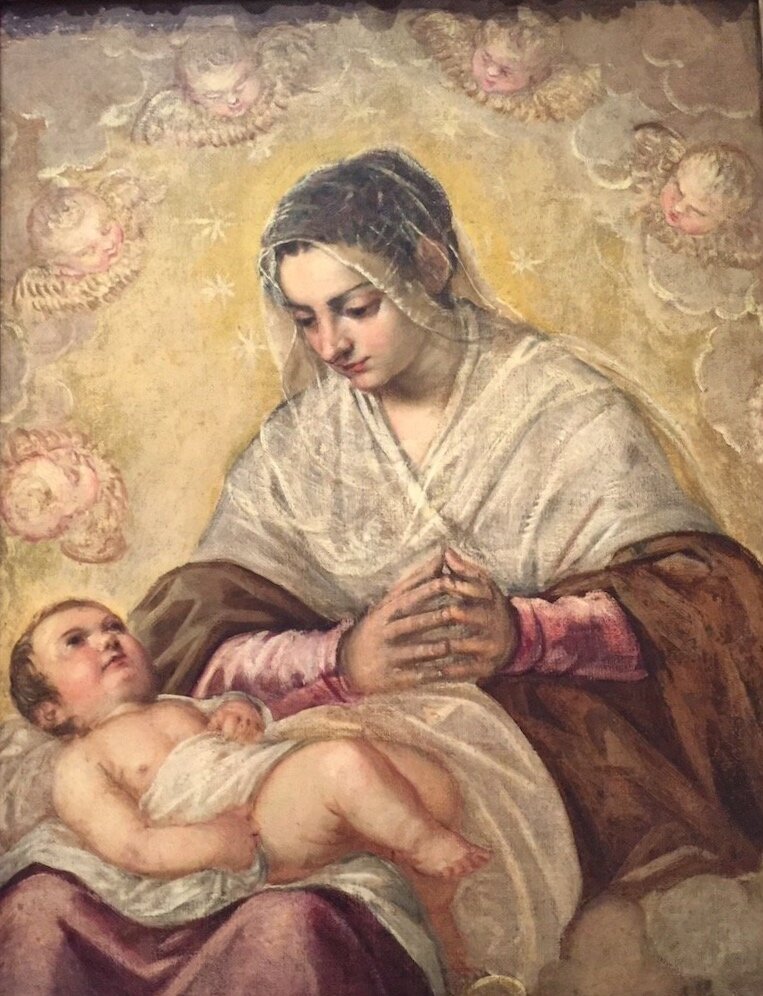Mary, my dearest Mother,
give me your heart so beautiful,
so pure, so immaculate,
so full of love and humility,
that I may receive Jesus as you did
and go in haste to give Him to others.
-- St. Teresa of Calcutta
Topics
Click on the image of the topic you wish to explore or just scroll down to view the entire page.
Mary, the First Believer
Catholics revere the Blessed Virgin Mary because of her “yes” to God at the Annunciation. She bore Jesus, making our salvation possible. The Catholic Church elevates and celebrates Mary with many feasts and with intercessory prayers. Mary is the Theotokos (God-Bearer), Queen of the Angels, Queen Mother, the new Ark of the Covenant, and the new Eve. She is the most pivotal human in salvation history.
Mary shared an awareness of the Messianic mission with Jesus. As his first believer, she has been with Jesus since his conception by the Holy Spirit, and for years before anyone else knew who Jesus would become. She kept it all in her heart and pondered what it all meant. As a good Hebrew woman, Mary knew of the Messiah and all the teachings in the Old Testament that predicted his arrival. Her faith in God’s plan grew everyday for the thirty years she spent with Jesus before he began his ministry. Mary was with her son throughout his journey on earth. Jesus performed his first miracle, at a wedding in Cana, in response to Mary's intercession. Ultimately, she was with him at his death and then at his resurrection and ascension.
After Jesus left the Earth, Mary helped the Apostles in a great time of crisis before the arrival of the Holy Spirit at Pentecost. Mary was a mother to both Jesus and to his Church. At his crucifixion, Jesus appointed Mary as the mother of all Christians, to be revered, faithfully trusted, and used as an intercessor.
Mary's Place in Scripture
Although Mary is not mentioned as much in the Bible as the Apostles, that does not mean she was not critical to the mission of Christianity. Mary's biblical roles include protector, mother, disciple, comforter, and guide. Click on the picture captions below to see the associated New Testament verses.
Marian Dogmas of the Catholic Church
In Luke 1:26-38, the Archangel Gabriel tells Mary that she is greatly favored and has been selected by God to bear a son named Jesus. Because he will be the Son of God, Jesus will not be conceived by human relations, but rather by the overshadowing of the Holy Spirit. Mary will become the Ark of the New Covenant that God is making with his people. The Ark of the Covenant of the Old Testament contained three treasures of the people of Israel: the stone tablets with the Ten Commandments which were the laws of God, an urn containing manna (bread from heaven), and Aaron’s rod that had budded (representing the priesthood). These three items have parallels to what is contained in the new ark, Mary. Jesus is the Word of God made flesh; he is the bread of life; and he is the true high priest. The Ark of the Covenant was greatly treasured by the Israelites: made of valuable materials, kept in a special tent, guarded at all times and considered pure and holy. Similarly, Catholics value and elevate Mary, the Ark of the New Covenant. Mary’s personal relationship with God and her special role in salvation history are proclaimed in four dogmas of the Catholic Church.
Divine Motherhood
The divine motherhood of Mary is the earliest of the Marian dogmas. Established in 431 AD at the council of Ephesus, this dogma proclaims the Blessed Virgin Mary as the Mother of God or Theotokos, meaning birthgiver of God in Greek. This does not mean that the Catholic Church defines Mary as divine, but rather that it recognizes the dual nature of the person Jesus Christ – equally divine and human. Mary is the Mother of God because Christ made of flesh was begotten through her [CCC 495]. The Solemnity of Mary, the Holy Mother of God, which celebrates the divine motherhood of the Blessed Virgin Mary, is a holy day of obligation in the Catholic Church celebrated on January 1st.
Perpetual Virginity
As stated above, Jesus was conceived by the overshadowing of the Holy Spirit, allowing Mary to remain a virgin. This is told not only to Mary in Luke’s Gospel, but also to Joseph in Matthew’s Gospel:
“… an angel of the Lord appeared to him in a dream and said, “Joseph, son of David, do not be afraid to take Mary as your wife, for the child conceived in her is from the Holy Spirit. She will bear a son, and you are to name him Jesus, for he will save his people from their sins.” All this took place to fulfill what had been spoken by the Lord through the prophet:
“Look, the virgin shall conceive and bear a son,
and they shall name him Emmanuel,”
which means, “God is with us.”
— [Mt 1:20-23, NRSVCE]”
For the rest of her life, Mary remained full of grace, the handmaiden of the Lord, and a virgin in her mission as the mother of Jesus and his first disciple. The Catholic teaching on Mary’s perpetual virginity is given in the Catechism of the Catholic Church [499-507].
The Immaculate Conception
From the beginning Mary was set apart by God for the mission of bringing Jesus into the world. In regard to this, a central dogma to Catholicism is the Immaculate Conception of Mary as declared by Pope Pius IX, Ex Cathedra, in 1854 in his Apostolic Constitution, Ineffabilis Deus. This dogma states that from her conception Mary was holy and in union with the sanctifying grace of the Holy Spirit. Therefore, Mary was born without original sin. This is a necessity because Jesus could not be born from a sinful creature. He could only come from a sinless vessel.
In the original Greek text of Luke’s Gospel, the sinless nature of Mary is revealed when the angel Gabriel greets Mary with:
Chaire kecritne, ho Kyrios meta sou!
This translates directly to:
Hail, who has been perfectly and completely graced by God, the Lord is with thee!
Over time the Catholic Church shortened this to:
Greetings, favored one! The Lord is with you. [Lk 1:28, NRSVCE]
This does not, however, minimize the understanding that unlike any other human, Mary was fully graced by God and hence sinless, and thus capable of giving birth to Jesus Christ, the Son of God.
The dispensation of being conceived in an immaculate state strengthens Mary for her divine motherhood, perpetual virginity, holiness and purity, thus leading to her Assumption into Heaven. The Immaculate Conception of the Blessed Virgin Mary is a holy day of obligation in the Catholic Church celebrated on December 8th. The Nativity of the Blessed Virgin Mary is celebrated nine months later on September 8th.
The dispensation of being conceived in an immaculate state strengthens Mary for her divine motherhood, perpetual virginity, holiness and purity, thus leading to her Assumption into Heaven. The Immaculate Conception of the Blessed Virgin Mary is a holy day of obligation in the Catholic Church celebrated on December 8th. The Nativity of the Blessed Virgin Mary is celebrated nine months later on September 8th.
The Assumption
Catholics believe that the Blessed Virgin Mary was assumed, body and soul, into Heaven because of her purity and the grace of God. However, this does not mean Catholics believe Mary to be divine or equal to her son. Jesus ascended to Heaven to sit at the right hand of God as a sign of his divine power. Although fully human, Mary was born sinless and does not sin on earth, thus, her human body is uncorrupted when she passes. Thus, according to the Catechism of the Catholic Church,
“Finally the Immaculate Virgin, preserved free from all stain of original sin, when the course of her earthly life was finished, was taken up body and soul into heavenly glory, and exalted by the Lord as Queen over all things, so that she might be the more fully conformed to her Son, the Lord of lords and conqueror of sin and death." [CCC 966]
The dogma’s origin is from Apostolic Tradition, in that the event was conveyed orally from the Apostles to their disciples and then celebrated by the early Church fathers. The dogma of the Assumption of Mary is not directly based on Sacred Scripture. However, since Mary is deemed the Ark of the New Covent, symbolism of the Assumption can be seen in the Book of Revelation:
Then God’s temple in heaven was opened, and the ark of his covenant was seen within his temple;… A great portent appeared in heaven: a woman clothed with the sun, with the moon under her feet, and on her head a crown of twelve stars. [Rev 11:19, 12:1, NRSVCE]
Mary’s Assumption has been a part of the Church for centuries, celebrated with festivals and depicted in many masterpieces. Pope Pius XII declared the dogma of the Assumption of Mary, Ex Cathedra, in 1950 in his encyclical, Munificentissimus Deus. This was met with much jubilation by the faithful and seemed to be a natural extension of the Immaculate Conception. The Assumption of the Blessed Virgin Mary is a holy day of obligation in the Catholic Church celebrated on August 15th.
The only two dogmas that have ever been declared by Popes as Ex Cathedra or from the Chair of St. Peter, are the Immaculate Conception and the Assumption of Mary, meaning that these are dogmas of faith central to the Catholic Church.
Vatican Documents Concerning Marian Dogmas
Vatican documentation on Mary’s role in Christianity and the Catholic Church is extensive. Some of the most significant papal writings are linked below.
Ineffablis Deus is an Apostolic constitution promulgated by Pope Pius IX in 1854 defining the dogma of the Immaculate Conception of the Blessed Virgin Mary.
Munificentissimus Deus is an Apostolic constitution promulgated by Pope Pius XII in 1950 defining the dogma of the Assumption of the Blessed Virgin Mary.
In Chapter 8 entitled “The Blessed Virgin Mary, Mother of God in the Mystery of Christ and the Church,” of Lumen Gentium a dogmatic constitution written in 1964, Pope Paul VI discusses Mary’s role in the life of Christ and the Church.
Redemptoris Mater is an encyclical written by Pope John Paul II in 1987 focusing the special role of the Blessed Mother in the plan of salvation.
Sections of the Catechism of the Catholic Church:
Part 4, [2673-2679, 2682]
Marian Apparitions
Apparitions are appearances that are supernatural, meaning they cannot be explained within our understanding of the material world. The Gospel of Matthew describes such an occurrence at the crucifixion of Jesus, where it is stated that after Jesus gave up his spirit,
“The tombs also were opened, and many bodies of the saints who had fallen asleep were raised. After his resurrection they came out of the tombs and entered the holy city and appeared to many.” [Mt 27:52-53, NRSVCE]
This revelation of the apparitions of saints occurs within sacred scripture and therefore is considered public revelation. Public revelation is the body of truths in Catholicism found in Sacred Scripture and Tradition that all Catholics must accept. In contrast, private revelation is the term used for apparitions after the death of the last Apostle. Church-approved private revelations can be accepted, but their acceptance is not required for compliance, and the faithful are under no obligation to believe in their validity. In fact, private revelations cannot add in any way to the deposit of faith. The role of private revelation is to help those open to the message transmitted to receive the Gospel of JesusChrist more clearly. A telltale signature of a false revelation is the desire by the visionaries to correct a dogma of the faith. The Catechism of the Catholic Church [65-67] clarifies public and private revelation.
The first recorded apparition of the Blessed Virgin occurred in 40 AD before her Assumption when she appeared to the Apostle St. James the Elder in Spain to give him encouragement for his mission of converting pagans to Christianity. She asked him to build a chapel at the place she appeared, which is now a basilica in Zaragoza, Spain. More information about the apparition can be found here.
There have been many Marian apparitions throughout the centuries since the Apostles. Marian apparitions include appearances by the Blessed Virgin Mary for the spiritual good of others or the church with the purpose of reiterating the message of Jesus Christ, sometimes as a warning of bad times to come if the message is unheeded. Multiple apparitions generally occur to the same visionaries and can be accompanied by miracles of healings and supernatural events. Mary may make requests for the visionaries to bring to the local bishop such as the building of a church. Ultimately, though the purpose of the apparitions is to serve as a reminder of the necessities of basic Christian practices – prayer, penance, sacraments, and evangelization.
The Vatican has a procedure for discerning the authenticity of apparitions. Details follow of four of the most notable Marian apparitions that have been approved by the Vatican.
Our Lady of Guadalupe
An apparition of the Blessed Virgin Mary seen by a baptized native Indian named Juan Diego in 1531 led to the conversion from Aztec paganism to Catholicism of nine million native Indians in present day Mexico. Mary gave Juan Diego a tilma, a cloak woven from cactus fiber, as gift for his bishop that showed the Blessed Virgin Mary surrounded by rays of sunlight while she is standing on a crescent shaped moon. The image is strikingly similar to the symbolism given in Revelation 12:1, “a woman clothed with the sun, with moon under her feet.” The fascinating details of Our Lady of Guadalupe’s visit and gifts are presented in the article and video linked below.
Our Lady of the Miraculous Medal
In 1830, the Blessed Virgin Mary visited a nun named Catherine Laboure in Paris to warn her of the evils that would beset the Catholic Church in France for the next 40 years. However, Mary brought with her the design of the Miraculous Medal. She asked Catherine to have the medal cast and distributed for the conversion and salvation of souls. The document linked below gives the history and symbolism of the Miraculous Medal.
Our Lady of Lourdes
In 1858, the Blessed Virgin Mary surprised Bernadette Soubirous near a grotto in Lourdes, France and asked to pray the rosary with her. She would visit Bernadette 18 times. On the ninth visit, Bernadette uncovered the healing spring waters of the famous Grotto of Lourdes. During her 16th visit, Mary declared “I am the Immaculate Conception” just four years after Pope Pius IX had declared the dogma of the Immaculate Conception in Ineffablis Deus. The documents linked below give the story of the apparitions as well as the medical evidence of verified miraculous healings that took place in Lourdes.
The Lourdes Sanctuaire has a wonderful website worth exploring. Specific details regarding the apparitions are given on this page:
Our Lady of Fatima
Keeping with her tradition, the Blessed Virgin Mary presented herself to three peasant children of Fatima, Portugal in 1917 during World War I. She appeared to them on six occasions, giving them warnings of the future and three secrets. On the final visit, October 17, 1917 the famous miracle of the sun occurred. Both a video and the EWTN website developed to celebrate the 100th anniversary of the apparitions are linked below. They give a summary of the events at Fatima, the biographies of the children, and much more.
more information on Marian Apparitions
The Spiritual Weapons of Mary
St. Paul tells us in his letter to the Ephesians:
Put on the whole armor of God, so that you may be able to stand against the wiles of the devil. [Eph 6:11, NRSVCE]
He goes on to enumerate the weapons given to us – truth, righteousness, peace, faith, salvation, the Word of God, and prayer.
The Blessed Virgin Mary gives us two great devotions for prayer and salvation – praying the Rosary and wearing the Scapular. Both devotions rest on simple but well-known practices so they were easily adopted by the faithful.
In 1208, seemingly by chance, Saints Dominic, Francis of Assisi, and Angelus met on a street corner in Rome, and although they had never met, they recognized each other. According to the witnesses, after the three brothers approached and greeted each other, they exchanged some interesting predictions. Angelus of the Order of Carmelites foretold that Francis would bear the wounds of Christ, known as the stigmata, while Dominic prophesized that Mary would make the Scapular of Order of the Carmelites a universal sign of affiliation with her. The Scapular is the robe worn by its friars. He went on to add that Mary would give his order, The Dominicans, a devotion known as the Rosary. Finally, he said that the Holy Mother would one day save the world through the Rosary and the Scapular. These prophecies were made before devotions to either the Rosary or the Scapular were founded.
A plaque commemorates this famous meeting in the Basilica Santa Sabina, which is near the place of the famous encounter. It hangs over the cell that St. Dominic used in the former convent that was later converted into a chapel by the famous Italian sculptor Bernini. It is dedicated to Saints Dominic, Francis, and Angelus who prayed there after their famous meeting.
The Rosary
The Rosary is a Marian devotion that uses a set of beads to count prayers during its recitation. Since the establishment of monastic orders, it was common practice to use beads and pebbles to count repetitions of prayers such as the Our Father and the Hail Mary, which both come directly from the Bible. Many attribute the origins of the Rosary devotion to Saint Dominic. It is believed that an apparition of the Blessed Mother visited him in 1214 and told him to spread the Angelic Psalter (the recitation of 150 Hail Marys) for the conversion of souls. Popular during Dominic’s lifetime, this devotion became neglected a century later, but around 1460 it was revived and enhanced by Blessed Alan de la Roche again under the direction of Mary. Over the next century the devotion of the Rosary evolved with additions and changes in its recitation into what we have today. The Secret of the Rosary, written by Saint Louis de Montfort sometime before his death in 1716, is a powerful book explaining the history, significance, and power of the Rosary. Lost during the French Revolution, the manuscript was finally rediscovered in 1842, but not printed until 1911.
Get more insight into the Rosary:
The Scapular
The scapular is a piece of clothing worn by monastic orders since their early years. It consisted of two pieces of cloth meeting at the shoulders, hanging down the front and back like a yoke. When the monks put on this yoke they knew that their burden of service to Jesus Christ was upon them. In 1251, the Blessed Mother appeared as Our Lady of Mount Carmel to St. Simon Stock and gave him the Brown Scapular which would be the symbol of salvation for those in the Carmelite Order. Eventually, the privilege of wearing the scapular as a sacramental was given to laypersons under the condition of investiture. The scapular was changed into two small pieces of wool material in the front and back held together by two wool strips and worn under their garments. Details of the Scapular’s promises are given in the book Sign of Her Heart (aka “Mary in Her Scapular Promise”) by John M. Haffert.
Get more information on the Scapular and Mary’s promise to those who wear it:
Prayers to Mary
Catholics believe Jesus Christ is our mediator to God the Father as is written by St. Paul in his letter to Timothy,
..there is one God; there is also one mediator between God and humankind, Christ Jesus, himself human, who gave himself a ransom for all… [1 Tm 2:5-6, NRSVCE]
St. Paul also wrote in his letter to the Galatians,
But when the fullness of time had come, God sent his Son, born of a woman, born under the law [Gal 4:4,NRSVCE]
demonstrating how integral the Blessed Virgin is to the whole of salvation history. As Mother Teresa once said, “No Mary, No Jesus.”
Catholics believe Mary is our Intercessor to Jesus. As John states in his Gospel, Jesus gave Mary to his beloved apostle, integrating Mary into the lives of all disciples and the Church:
When Jesus saw his mother and the disciple whom he loved standing beside her, he said to his mother, “Woman, here is your son.” Then he said to the disciple, “Here is your mother.” And from that hour the disciple took her into his own home. [Jn 19:26-27, NRSVCE]
If each of us is like the “disciple whom he loved” then the Blessed Mother is a gift to all of us from Jesus. We must welcome her into our lives. Jesus desires that we have a loving relationship with her as he did. When Catholics ask Mary, whom “all generations shall call blessed”, to pray to her son on our behalf, we are not deifying her. Rather, we are acknowledging Mary’s cooperation with Jesus in salvation history, from the Incarnation to the first miracle at Cana to his Resurrection and Ascension, as well as Mary’s joys and sufferings during her lifetime.
Here are a few of the beautiful prayers that Catholics recite to Mary. You may recognize some of them from the Gospels.
